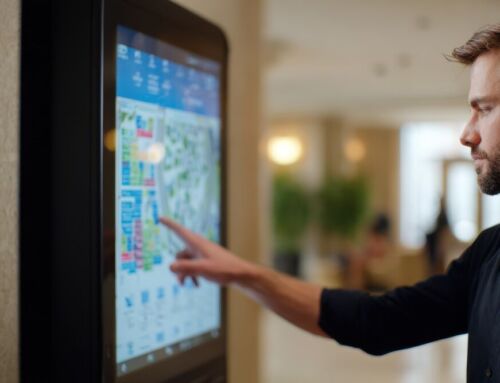Remember the vending machines of old? Coin-operated, and mechanical, it often felt something of a lottery as to whether you’d get the product you wanted.
Today’s models look very different. Slick, digital, touchscreen operated – like so many electronic devices, vending machines have gotten ‘smart’. And it’s kiosk technology driving them.
In many ways, vending machines were an early example of ‘self-service’ technology, the concept that eventually evolved to produce modern-day kiosks. Now, almost bringing the cycle full circle, it is technology pioneered in self-service kiosks – touchscreen UI, internet connectivity, software controls, digital sensors – that is helping vending machines serve people better than ever.
Convenience at a touch
Let’s start by looking at what touchscreens add to vending machines. Touchscreen technology has been instrumental in the rise of kiosks. With the evolution of touchscreens, computing struck on a type of interface that is both exceptionally intuitive and user friendly, and robust.
Because they rely on mechanical buttons and other moving parts, keypads, mouses and their ilk are relatively fragile. In high-traffic public environments, they are prone to break and require regular maintenance. Touchscreens, on the other hand, have no moving parts. Modern examples made from advanced reinforced glass are extremely hard-wearing and scratch-proof. It takes a determined effort of vandalism to damage them.
The keypads used on traditional vending machines also offered limited functionality. Having to type in the name of a product would be too time-consuming, so most vending machines went with a simple key system – a number and a letter corresponding to where an item was located in the machine. But that ends up limiting the design of the machine and what can be placed where.
With a touchscreen, all the customer has to do is touch the image of the item they want on the screen. Because this is so simple and intuitive, it frees vending machine manufacturers to innovate with larger and more varied product selections. With a carousel, for example, customers can simply ‘swipe’ a digital replica to turn it around and find the item they want. More choice means more sales. But the machine remains super easy to use.
Finally, touchscreens offer other benefits to vendors. They can display advertisements, for example, opening up an additional source of revenue. They can also be used to capture customer data, through things like signing up for exclusive offers or entering competitions, to fuel wider marketing efforts.
Connected and intelligent
The combination of internet connectivity, software and digital sensors also contributes significantly to smart vending machines. One of the big reasons kiosks have proven to be such a hit in retail and hospitality is because internet connectivity means they can process digital payments. Likewise with modern vending machines. No more having to worry about your coins getting jammed – your contactless card or the digital wallet on your phone will work just fine.
One of the big challenges with vending machines is keeping them well-stocked. An empty machine means no sales, and therefore represents a lost sales opportunity. The combination of sensor technology, software and internet connectivity means alerts can be sent to vendors before a particular item runs out, so it can be replenished in good time. That way, you never miss a sale.
Sensor technology and ‘smart’ software controls have also enabled a huge expansion in the range of items that can be sold through a vending machine, especially when it comes to food and drink. In the past, it was mainly limited to hot and cold drinks, or light snacks, which required constant temperature control that is easy to maintain. Nowadays, however, you have temperature-controlled vending machines that cook or reheat all sorts of foods on demand – pizza, noodles, fresh bread, and a peculiar Dutch speciality, the FEBO deep-fried vending chain!
Sensor technology also generates valuable data that can be used to optimise what is offered through vending machines. Simply keeping track of what items are bought and when can be used to build up a detailed picture of sales patterns, helping vendors get the balance of stock in line with demand.




